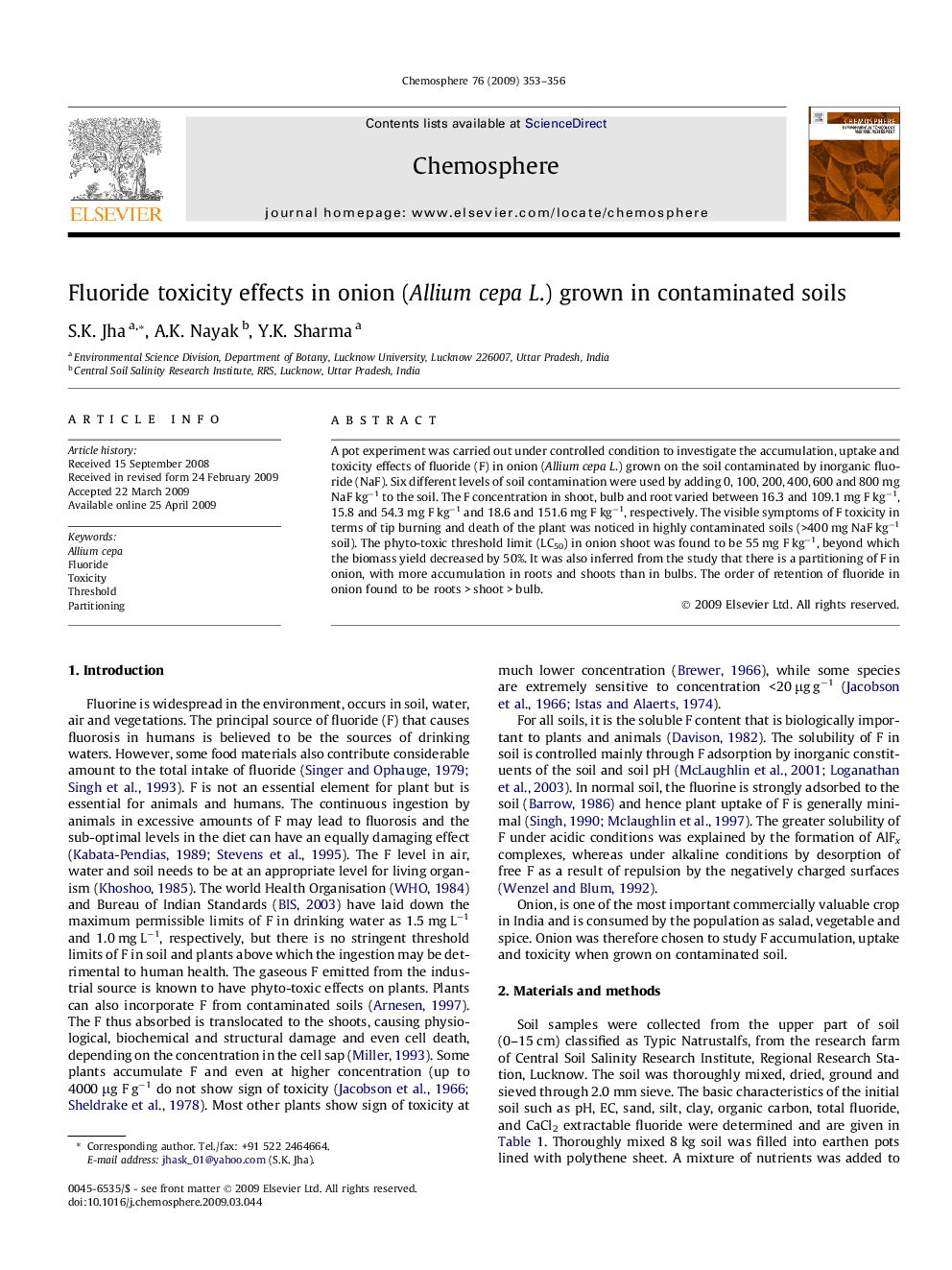| Article ID | Journal | Published Year | Pages | File Type |
|---|---|---|---|---|
| 4412865 | Chemosphere | 2009 | 4 Pages |
A pot experiment was carried out under controlled condition to investigate the accumulation, uptake and toxicity effects of fluoride (F) in onion (Allium cepa L.) grown on the soil contaminated by inorganic fluoride (NaF). Six different levels of soil contamination were used by adding 0, 100, 200, 400, 600 and 800 mg NaF kg−1 to the soil. The F concentration in shoot, bulb and root varied between 16.3 and 109.1 mg F kg−1, 15.8 and 54.3 mg F kg−1 and 18.6 and 151.6 mg F kg−1, respectively. The visible symptoms of F toxicity in terms of tip burning and death of the plant was noticed in highly contaminated soils (>400 mg NaF kg−1 soil). The phyto-toxic threshold limit (LC50) in onion shoot was found to be 55 mg F kg−1, beyond which the biomass yield decreased by 50%. It was also inferred from the study that there is a partitioning of F in onion, with more accumulation in roots and shoots than in bulbs. The order of retention of fluoride in onion found to be roots > shoot > bulb.
